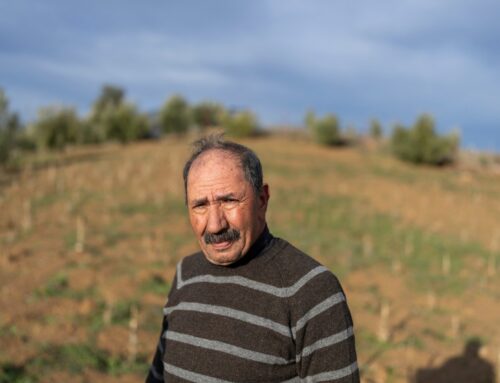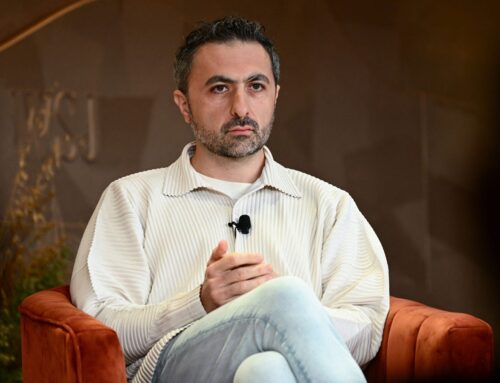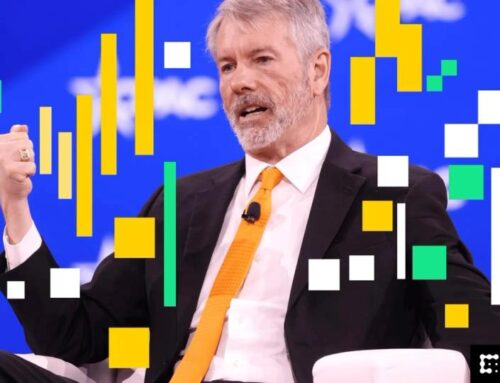Sen. Murkowski makes pitch for renewable energy’s value in Alaska communities
April 23, 2025
In a political environment where the president and his administration are pushing for more fossil fuel development and scorning alternative energy, Alaska’s senior U.S. senator is defending renewable projects in the rural areas of her state.
U.S. Sen. Lisa Murkowski, R-Alaska, speaking at an Anchorage conference on Tuesday, recounted her efforts to convince Interior Secretary Doug Burgum that wind, solar and other sources of renewable energy are valuable even in oil-producing Alaska.
In a phone call Monday that lasted more than an hour and in which Burgum reiterated the administration’s support for more extraction of oil, gas and coal and its opposition to wind energy, Murkowski said she made a pitch for renewable projects in Alaska that were previously awarded grants but are now in limbo because of Trump administration funding freezes.
“We’re coming to the department and saying, ‘I know that you put on pause funding for clean energy resources. If you don’t like the vernacular that we’re using, that’s fine, but look at it from the perspective of energy independence for these small communities and what independence means and looks like for them,’” Murkowski said at the Alaska Infrastructure Development Symposium.
The three-day symposium is sponsored by the state, the Alaska Municipal League, the Alaska Federation of Natives and other organizations.
Murkowski urged conference attendees to help educate officials from the Department of the Interior and other federal departments about rural Alaska communities’ situations. Unlike communities in the Lower 48 states, rural Alaska communities are unconnected to larger energy grids and often struggle with expensive and difficult-to-store diesel fuel, making renewables a practical alternative, she noted.
Even a long-desired natural gas pipeline megaproject from Alaska’s North Slope, which President Donald Trump and others are enthusiastically backing, would not do much to help rural Alaska communities that lie outside of any large power grid.
“It’s not going to do a spur out to Togiak. It’s not going to do a spur out to Kobuk,” Murkowski said, naming a Yup’ik village in Western Alaska and an Inupiat village in Northwest Alaska. “So I said, ‘Please, please don’t forget the opportunities that come to our more rural communities that are more isolated who need to be able to access those resources that are there. And those resources may be a little bit of wind, it may be a little bit of solar, it may be a little bit of the of the run of river, it may be a little bit of geothermal.’”
Murkowski’s defense of renewable energy comes as hundreds of millions of dollars’ worth of planned rural Alaska projects are in doubt because of Trump administration actions. The administration has frozen much of the infrastructure funding that was awarded during the Biden administration, including funding for renewable energy development.

Yereth Rosen
/
Alaska Beacon
Last month, the Alaska Public Interest Research Group said it had calculated that over $1 billion of Alaska energy and other infrastructure projects were affected. As a result, some local governments, tribes and other organizations have delayed planned projects because they are uncertain about reimbursement. Such delays in rural Alaska can put projects at least a year behind schedule because construction work depends on delivery of heavy equipment and material by barges that can travel only in ice-free conditions
As of yet, there has been little clarity on which projects will actually get funded and which will have to be canceled, said Murkowski and municipal officials attending the symposium.
Murkowski said at least a couple of Trump administration department secretaries are planning trips to Alaska in June, and that might present an educational opportunity. She did not specify which cabinet members may be visiting.
Trump has been dismissive of renewable energy and, in particular, hostile to wind energy for several years. He has claimed, without evidence, that wind turbines cause cancer, drastically depress property values and kill massive numbers of whales. His disdain for wind energy dates back at least to 2012, when he fought unsuccessfully against a wind farm off the coast of a golf course he owned in Scotland.
One of his Inauguration Day executive orders earlier this year halted federal funding and permitting for all wind projects, both offshore and onshore.
Wind energy has been important to rural Alaska communities, where diesel-fueled energy costs are extremely high.
Kotzebue, a mostly Inupiat community, is an example. The Northwest Arctic hub, home to about 3,000 people, has been using wind energy since the 1990s. The system has grown over the years, and by 2020, wind was supplying a fifth of annual local power needs, according to the Kotzebue Electric Association. That displaced the annual need for 250,000 to 300,000 gallons of diesel fuel each year, according to the utility.
The community has also been using solar energy since 2020, and it has a longer-term goal of using renewables for 50% of its power, according to the utility.
Kotzebue, the Northwest Arctic Borough and several surrounding villages are among the communities with planned energy projects that have been paused because of Trump administration actions. Last year, during the Biden administration, the U.S. Department of Energy awarded $58.4 million in grants to local governments and other entities in the region to develop more solar arrays, an energy-storing battery system, heat pumps and other projects.
Search
RECENT PRESS RELEASES
Related Post




